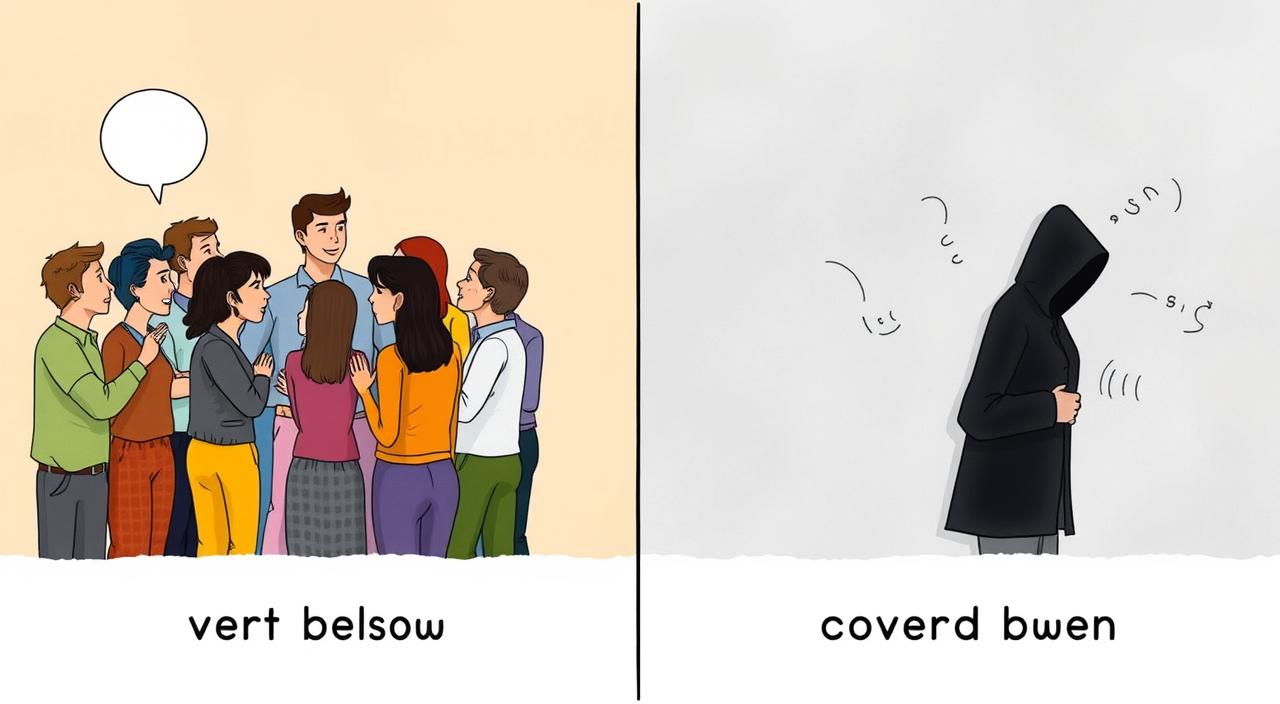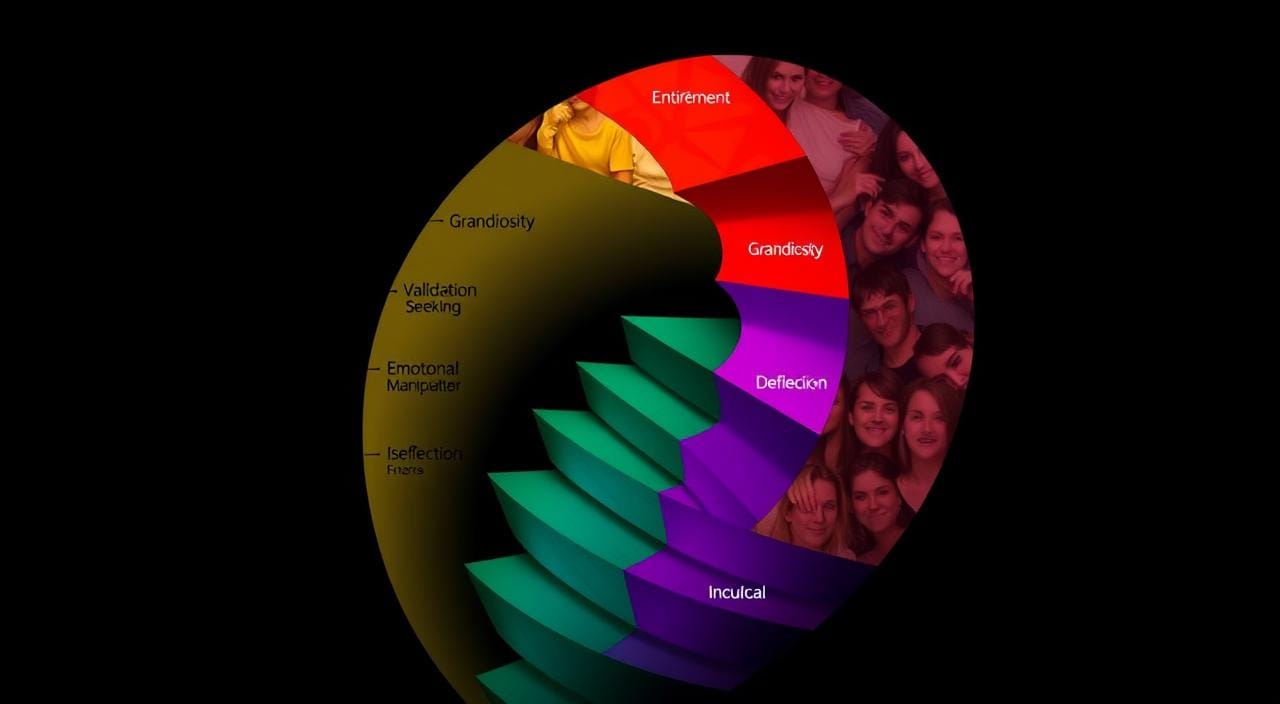As I sit here, I think about how our relationships and society are shaped. The difference between overt and covert behaviors is striking. One is open and clear, the other is hidden and subtle. These behaviors can deeply affect our lives, often in ways we don’t see. Let’s discuss overt vs covert.
This article aims to uncover this hidden world. It wants to help us understand the difference between overt and covert behaviors better. This way, we can navigate these complexities with more awareness and understanding.
Key Takeaways
- Covert behaviors are subtle, confusing, and hard to detect, while overt actions are more visible and apparent1.
- Covert abusive behaviors include joking, lying, withholding, and put-downs. Gaslighting is especially damaging1.
- Overt behaviors change the environment we see. Covert behaviors involve emotions and thoughts we can’t see2.
- Covert racism and sexism can affect jobs, career growth, and how society sees us3.
- Knowing the difference between overt and covert behaviors is key. It helps us spot and deal with harmful patterns in our lives.
Introduction: The Hidden World of Covert Behaviors
Covert behaviors are tricky to spot, even for those close to the person4. They include our thoughts and feelings, which shape how we act. Understanding these hidden actions is key to making sense of behavior and finding solutions4.
It’s hard for the person involved to see what’s happening. Others might not believe them, not knowing the complexity of these actions.
Covert behaviors change based on the situation4. They are not fixed. Measuring these subtle signs is a challenge, but new research methods can help4. By using different approaches, we can better understand this hidden world. This knowledge can help in many areas, like psychology and marketing.
“Covert behaviors are internal processes not observable directly, yet they influence our actions in profound ways.”4
Exploring overt and covert behaviors shows their big impact. Recognizing and tackling these hidden actions is key for better relationships and understanding human behavior.
A radical behaviorist view says overt and covert actions are different but not in kind5. New tools like EEG and ERP help us see these hidden responses5. These tools give us insights into how covert behaviors affect what we do.
| Covert Behaviors | Overt Behaviors |
|---|---|
| Internal processes not directly observable | Apparent and visible actions |
| Range from cognitive activities to emotional experiences | Easily identifiable by others |
| Significantly influence our outward behaviors | Directly observable by others |
| Difficult to measure and study | Relatively straightforward to observe and analyze |
By uncovering the hidden world of covert behaviors, we learn more about humans4. This journey helps us understand complex relationships better. It prepares us for more in-depth exploration of these behaviors and their effects.
Defining Overt and Covert Behavior
It’s important to know the difference between overt and covert behaviors in psychology and how we interact with each other. Overt behaviors are actions we can see, like what we say or do. Covert behaviors are what goes on inside our minds, like our thoughts and feelings6.
Overt: Apparent and Visible
Overt behaviors are things we can see and hear. They include our actions, words, and body language67. These behaviors show what’s happening inside us, like our thoughts and feelings6.
Covert: Hidden and Concealed
Covert behaviors are our inner thoughts and feelings. They are not visible to others but guide our actions67. These mental processes help us make decisions and remember things7.
Understanding both overt and covert behaviors helps us see how we interact with others. Healthy relationships balance what we show and what we keep hidden. But, problems can start when hidden behaviors are used to control or harm others.
| Overt Behavior | Covert Behavior |
|---|---|
| Visible and observable actions, verbal expressions, and bodily gestures6 | Hidden, internal mental processes like thinking, reasoning, and cognitive functions67 |
| Can be detected by the senses7 | Cannot be directly observed67 |
| Outwardly expressed behaviors6 | Underlying mental processes7 |
“Covert behaviors like thinking or reading silently impact outward actions.”7
Knowing the difference between overt and covert behaviors helps us understand ourselves and others better. It can make our interactions more meaningful and respectful.
The Duality of Covert and Overt Behaviors
Understanding human behavior is complex. It involves the relationship between what we do openly and what we think secretly. Our actions are shaped by our hidden thoughts and beliefs in many ways8.
In narcissism, the difference between what we show and what we hide is key. Covert narcissism in women is subtle and hard to spot8. They use passive-aggressive ways, seek sympathy, and seem overly sensitive to criticism. Yet, they hide their true superiority behind a humble mask8.
Covert schizoidism also shows the mix of wanting to fit in and needing alone time. Covert schizoids are great at hiding their true feelings in social situations. They are different from those who openly show they don’t care about social norms9.
It’s important to understand the difference between covert and overt behaviors. This helps us better understand ourselves and others. By seeing the hidden reasons behind our actions, we can make deeper connections10.
“The true face of a person is not the one that is seen, but the one that is hidden.” – Unknown
Covert Abuse: Subtle and Confusing Tactics
Covert abuse uses hidden tactics that are hard to spot, even for those in the relationship11. These actions are often disguised as concern or misunderstanding. This makes it tough for both the victim and others to see it as abuse12. It’s key to learn how to spot these signs to tackle this problem.
Recognizing Covert Abusive Behaviors
Covert emotional abuse uses subtle tactics that are hard to see12. People being abused might not see the abuse right away. This is because the abuser might deny their actions if confronted12. These hidden actions can cause a lot of emotional pain and doubt.
Research shows that covert abusers use many tactics to control others. These include gaslighting, body language tricks, and grooming11. Gaslighting makes people doubt their own sanity by changing reality11. Abusers also use body language to show they are better than others11.
Grooming is used to attract victims and keep them under control11. Abusers might seem perfect at first, showing interest and attention11.
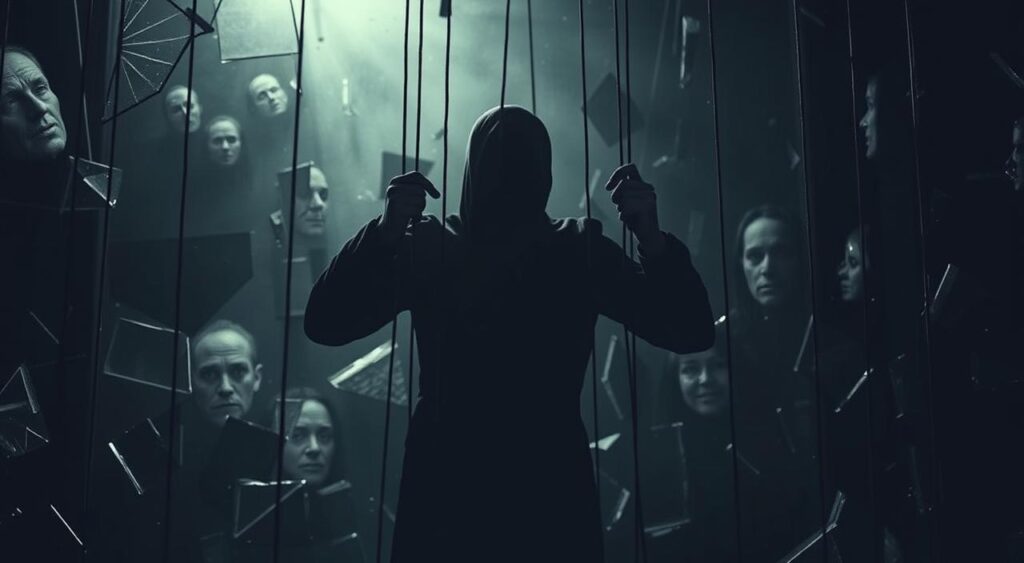
It’s important to spread the word about covert abuse12. This helps victims get help and build better relationships12. By knowing about these subtle tactics, we can support those affected and help stop abuse12.
“Covert abuse is like a spider’s web – it’s invisible to the naked eye, but the damage it can inflict is very real.”
The Impact of Overt and Covert Behaviors
Overt behaviors, like body language and words, are easy to see and can affect others13. Covert behaviors, or hidden thoughts and feelings, also shape our interactions and bonds4. It’s key to grasp how both types of behaviors influence us for better relationships.
Overt actions can be counted, but hidden behaviors are harder to measure13. Studies reveal that what we believe and experience matters more than what we say13. Attitudes that are clear, stable, and based on real experiences are more likely to guide our actions13.
Covert behaviors, like our thoughts and feelings, shape what we do and how we act4. These inner workings change based on the situation, making them tricky but insightful to study4. Scientists use various methods to uncover these hidden behaviors4.
Research links homelessness to both visible and hidden bad behaviors in teens14. But only visible bad actions are linked to parents’ wrongdoings14. Parental watchfulness affects both kinds of bad behaviors in youth14. Also, hanging out with the wrong crowd is a big risk for bad behavior in teens, which can last into adulthood14.
In short, both visible and hidden behaviors greatly impact our connections and happiness. By understanding these behaviors, we can strive for better and healthier relationships.
Examples of Overt and Covert Behaviors
Exploring overt and covert behaviors shows us their impact on relationships. We see everything from fake apologies to using jokes to hurt others. These actions can be hard to spot but have big effects.
Apologies and False Remorse
False apologies are a common covert behavior. They might seem like real apologies at first, but they lack true remorse. These fake apologies can make the person on the receiving end feel ignored and unvalued.15
Joking and Humiliation
Using jokes to hurt others is another covert tactic. It’s when someone makes jokes that actually belittle or insult others. They might say it was just a joke when caught.15
Lying and Deception
Lying and hiding the truth are key signs of covert behavior. While obvious lies are easy to spot, hidden deceptions are harder to find.15 This can destroy trust and communication in relationships.
Withholding and Emotional Withdrawal
Withholding affection or pulling away emotionally is a covert way to control. It can make the other person feel left out and unsure.15 This behavior can hurt a lot, making the person feel alone.
Put-Downs and Verbal Attacks
Even disguised as helpful advice, verbal attacks and put-downs are covert abuse. They can slowly erode someone’s self-confidence, often in sneaky ways.15 Unlike obvious verbal attacks, these are harder to see as abuse.
Looking at these examples helps us understand the harm covert behaviors can cause. It’s important to spot and deal with these actions to build strong, respectful relationships.15
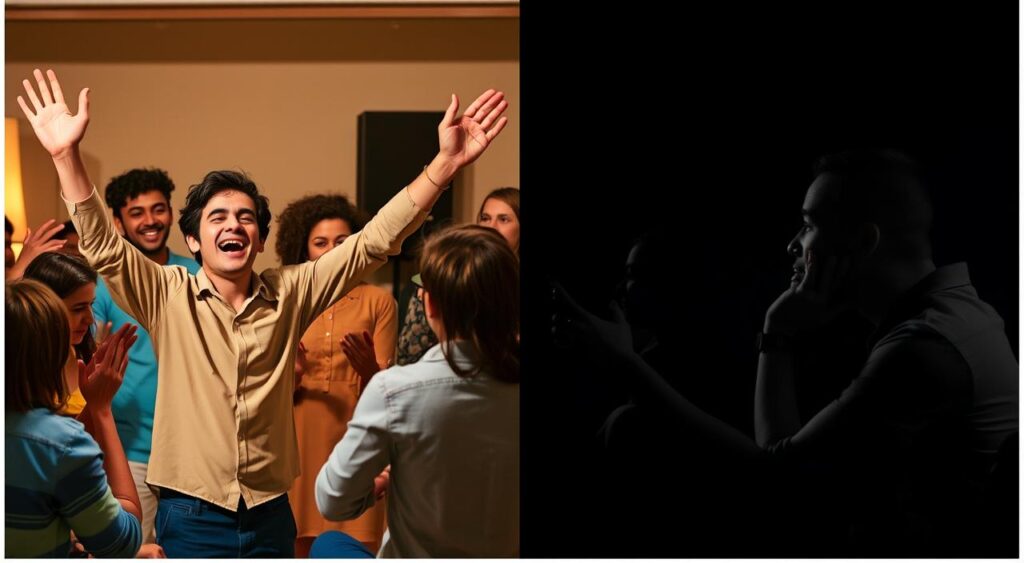
Fooling the Outsiders: How Covert Behaviors Deceive
Covert behaviors are sneaky because they often trick people outside a relationship. They see only the fake image of the abuser16. Image management and gaslighting help the abuser keep up a false front. This makes it hard for the victim to find support16.
Image Management and Public Facades
Covert abusers are experts at making a good impression. They seem charming and successful, but secretly control and deceive16. Their fake image makes it hard for others to see the abuse happening in secret.
Gaslighting and Manipulating Perceptions
Gaslighting is a way for abusers to mess with their victims’ minds16. They deny or change what the victim experienced. This makes the victim doubt themselves, feeling alone and unsure16.
It’s important to know how covert behaviors trick people16. By exposing these tactics, we can help victims. We can help them regain their confidence and break free from abuse.
overt vs covert
Understanding human behavior is complex. It involves knowing the difference between overt and covert actions. Overt actions are easy to see, while covert ones are hidden17. To understand these, we need to look at their characteristics and how they affect our relationships.
Overt narcissists want to be in charge and crave admiration. They often ignore others to get what they want18. Covert narcissists act the same but in a more hidden way. They use passive-aggressive behavior and blame others to feel important17.
Both types of narcissists think highly of themselves and dream of fame. But, they differ in how they seek attention. Overt narcissists openly seek admiration, while covert ones ignore others to focus on themselves17.
Knowing the difference between overt and covert behaviors is key. It helps us understand how they affect our relationships and well-being. By recognizing these differences, we can better interact with others and understand their motivations.
| Overt Behaviors | Covert Behaviors |
|---|---|
| Readily apparent and visible17 | Hidden and concealed17 |
| Strong need for dominance and openly self-absorbed traits18 | Subtle and concealed tactics, such as passive self-importance and blaming or shaming others17 |
| Demand admiration, even at the cost of relationships18 | Create confusion or disregard others to maintain focus on themselves17 |
By understanding the difference between overt and covert behaviors, we can better interact with others. This helps us see the motivations and dynamics in our social world1718.
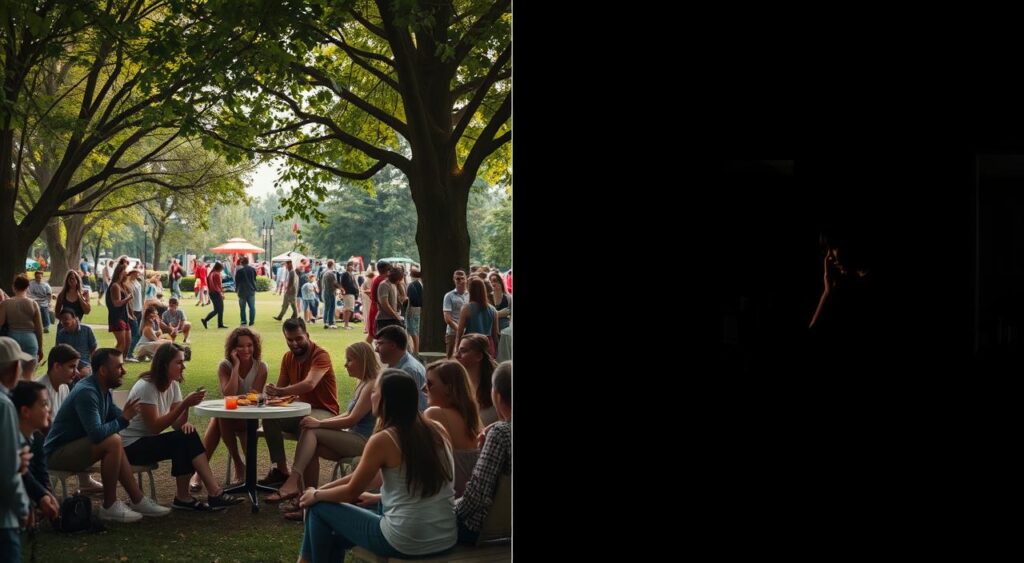
“Covert narcissists exhibit the same behaviors as overt narcissists but in less obvious ways, often using different tactics to seek admiration and importance.”
Covert Racism: A Systemic Issue
Covert racism is a hidden problem in our society and workplaces. It’s not as obvious as old-fashioned racism, but it’s just as harmful. It shows up in rules, actions, and behaviors that unfairly target people of color in sneaky ways.
Underemployment and Workplace Discrimination
Underemployment is a big example of covert racism. Black Americans and Native Americans are more likely to be in foster care19. Only 31% of Black people and 22% of Hispanic people get high-paying jobs, compared to 41% of White people19. This shows clear barriers in the job market for people of color.
Workplace discrimination also hides in plain sight. For example, Hispanic women make only 58% of what White men make19. This shows how racism and sexism mix together. Covert racism can also mean small slights, being left out, or not getting chances to move up.
To fix these problems, we need to understand covert racism better. We must work on big solutions. By seeing these hidden issues, we can strive for a fairer world for everyone.
“Covert racism, which is hidden and often difficult to prove, remains a pervasive problem in society and the workplace.”
Covert Sexism: Pervasive and Insidious
Sexism, like racism, can be hidden in our culture and society. It shows up in fields like medicine and marketing. Benevolent sexism is also a problem, making it hard for women to have their say and succeed.
Gender Bias in Medicine and Marketing
In medicine, sexism is a big issue. A study in Australia found that sexism was often ignored or downplayed in the media20. The marketing world also has sexism, with both men and women showing bias21.
Benevolent Sexism: A Subtle Form of Discrimination
Benevolent sexism seems nice but really holds women back. It can make women feel sad, stressed, and unhappy with their lives20. It’s about not listening to women, taking their ideas without saying thanks, and getting mad when they speak up20.
Covert sexism affects many, especially Black women and transgender women. They face racism, sexism, and transphobia all at once20. Women might even start to believe sexist ideas themselves, trying to avoid trouble from men20.

We need to tackle covert sexism in many ways. By seeing how sexism hides in plain sight, we can change our culture and society. This will help everyone, in all fields and communities, to do well and be respected2021.
The Challenges of Studying Covert Behaviors
Studying covert behaviors is tough because we can’t see what’s inside someone’s mind14. Unlike actions we can see, hidden behaviors are hard to study22. But, scientists have found new ways to uncover these hidden parts of us.
Innovative Research Techniques
One cool way to study hidden behaviors is through implicit association tests23. These tests show what we really think by how fast we react to certain words23. It’s a way to see what’s hidden in our minds that we might not even know ourselves.
Behavior analysts also look into how to study these hidden actions23. They’ve faced questions about how to prove these hidden behaviors exist23. But, some think that focusing only on what we can see might be a better way to understand these mysteries23.
Even with these hurdles, scientists keep working to understand us better14. They use new methods and ideas to reveal what’s hidden in our actions and thoughts14. Their discoveries help us make better choices and change the world for the better.
“Studying covert behaviors is like trying to catch a ghost – the evidence is elusive, but the impact is all too real.”
The Importance of Recognizing Covert Behaviors
It’s vital to spot and tackle covert behaviors to help people, relationships, and society grow stronger24. Covert narcissists hide their superiority with sneaky tactics, unlike the more obvious narcissists24. Knowing the difference helps us grasp the full range of human actions and their effects.
Covert actions are private, hidden from others’ view25. They include thoughts, feelings, and subtle words that are easy to miss or misunderstand25. On the other hand, overt actions are open and clear to everyone25.
Spotting covert behaviors is key to fixing their harm26. Actions like lying and manipulation can really hurt people and their bonds26. By exposing these hidden actions, we can understand what drives us and improve our interactions.
With therapy and counseling, people can learn to notice their covert actions26. They can uncover the reasons behind these actions and improve how they talk to others26.
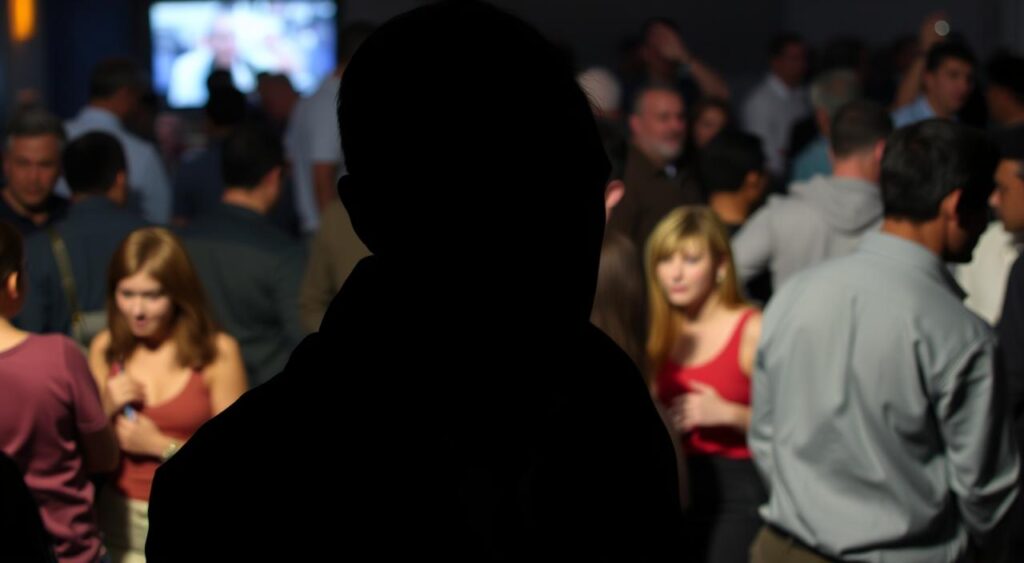
In the end, seeing covert behaviors is crucial for a fair and peaceful world24. By uncovering the hidden forces in our interactions, we can aim for openness, understanding, and fairness. This helps everyone and communities to flourish.
Breaking the Cycle of Covert Abuse
Overcoming covert abuse means helping survivors see the tricks used against them. It also means teaching allies how to really help27. With more awareness and support, we can stop covert abuse and help survivors take back their lives.
Empowering Survivors and Allies
Covert abuse uses sneaky tactics that can go on for years27. It’s hard for victims to spot or fight back because of its hidden nature27. This leads to feelings of loneliness, worry, and sadness27.
To fight covert abuse, survivors need to know the signs. These include making them feel small, shifting blame, and always being defensive27.
Allies are key in helping survivors. They need to learn about covert abuse’s subtle signs28. This includes recognizing behaviors like ignoring them, making them doubt themselves, and being passive-aggressive28. With support, survivors can feel strong again and value themselves more.
Covert abuse affects many relationships, like marriages, friendships, and work27. It can cause serious harm, like low self-esteem, sadness, and feeling alone28. But, by teaching survivors and allies how to spot and fight covert abuse, we can start to change things for the better.
“The silent killer of relationships, covert abuse is often more damaging than overt aggression. By shining a light on these subtle, hidden tactics, we can empower survivors and allies to reclaim their power and build the connections they deserve.”
Breaking the cycle of covert abuse needs a big effort. We need education, resources, and a strong support for survivors and their allies272829. Together, we can make a world where covert abuse is seen and dealt with in a kind and understanding way272829.
Conclusion
Understanding the difference between overt and covert behaviors is key. It helps us deal with the complex world of human connections and fight against discrimination30. By seeing the hidden forces behind our actions, we can aim for clearer, fairer, and healthier relationships and societies.
Overt behaviors are easy to see, while covert ones are hidden30. This difference is important because hidden actions can lead to abuse, lies, and keep unfair systems alive30. But, by learning to spot and tackle hidden behaviors, we can stop abuse and build a fairer world.
We must keep watching for both obvious and hidden behaviors31. Our goal is to live in a world where what we do matches what we mean31. By doing this, we can build real, strong, and empowering connections. Together, we can face the challenges of hidden behaviors and create a future where our actions truly show our values.
FAQ
What is the difference between overt and covert behaviors?
Overt behaviors are actions we can see and hear. Covert behaviors are hidden thoughts and motives that guide our actions. Healthy relationships mix both. But, problems start when covert actions become controlling and hurtful.
What are some examples of covert behaviors?
Examples include fake apologies, using jokes to belittle, lying, and hiding affection. Verbal insults are also covert. These actions are hard to spot, even for those in the relationship.
How do covert behaviors fool those on the outside of a relationship?
Abusers use tactics like image control and gaslighting. These help them keep up a false image. It’s hard for victims to get help because of this.
Can covert behaviors contribute to systemic issues like racism and sexism?
Yes, covert racism and sexism hide in policies and workplace biases. They are part of our culture. Spotting these is key to fighting inequality.
What are some of the challenges in studying covert behaviors?
Studying covert behaviors is tough because we can’t see their inner workings. Researchers use tests like implicit association tests. These help us understand these hidden behaviors and their effects.
How can we address the destructive effects of covert behaviors?
To fight covert abuse, we must empower survivors and educate supporters. Awareness and resources are crucial. They help survivors regain control and well-being.
Source Links
- Overt vs. Covert Behavior (Relationship Examples) – https://themendproject.com/overt-vs-covert-behavior-examples/
- Overt vs Covert Behavior – Psychestudy – https://www.psychestudy.com/behavioral/behavior/overt-vs-covert
- The Difference Between Overt & Covert: Recognizing Hidden Systemic Racism & Sexism | InHerSight – https://www.inhersight.com/blog/diversity/overt-vs-covert
- What is Covert Behavior? – iMotions – https://imotions.com/blog/learning/research-fundamentals/what-is-covert-behavior/
- Neuroscientific Measures of Covert Behavior – https://www.ncbi.nlm.nih.gov/pmc/articles/PMC3359857/
- Overt and Covert Human Behaviors – https://www.studyandexam.com/overt-covert-behavior.html
- Covert Behavior – Psychestudy – https://www.psychestudy.com/behavioral/behavior/covert
- Traits Of Covert Narcissistic Women | Military Lawyers – https://ucmjdefense.com/traits-of-covert-narcissistic-women.html
- The Secret World of Covert Schizoid Personality — Mind Mastery – https://www.mind-mastery.com/blog/the-secret-world-of-covert-schizoid-personality
- Five Signs That You’re Married to a Covert Narcissist – https://www.thegillfirm.com/blog/2024/april/five-signs-that-you-re-married-to-a-covert-narci/
- Learn to Recognize 26 Covert Abuse Tactics — Confusion to Clarity – https://www.confusiontoclaritynow.com/blog/covert-abuse-tactics
- Covert And Overt Abuse: Exploring The Differences – https://marriagerecoverycenter.com/covert-and-overt-abuse/
- Overt Behavior: 10 Examples and Definition – https://helpfulprofessor.com/overt-behavior/
- Predicting overt and covert antisocial behaviors: parents, peers, and homelessness – https://www.ncbi.nlm.nih.gov/pmc/articles/PMC3210031/
- Covert Behavior: 10 Examples and Definition – https://helpfulprofessor.com/covert-behavior/
- Unveiling the Cheating Patterns of Covert Narcissists: How to Spot a Narcissist’s Deception – https://somabrain.com/en/the-mindset/unveiling-the-cheating-patterns-of-covert-narcissists-how-to-spot-a-narcissists-deception
- Covert and Overt Narcissist – The CCBI – https://theccbi.com/covert-and-overt-narcissist/
- Covert vs. Overt Narcissism – Dallas Mental Health Services – https://campbellrecoveryservices.com/covert-vs-overt-narcissism/
- Covert vs Overt Racism – Definition & Comparison — CultureAlly – https://www.cultureally.com/blog/overtvscovertracism
- What Is Misogyny? – https://www.verywellmind.com/what-is-misogyny-5076055
- PDF – https://www.gtwlawyers.com/wp-content/uploads/2018/10/WhitneyJohnsonTheVerdictArticle.pdf
- What is Overt Behavior? – iMotions – https://imotions.com/blog/learning/research-fundamentals/what-is-overt-behavior/
- Microsoft Word – 04Stemmer.doc – http://www.behavior.org/resources/129.pdf
- Distinguishing Between Overt vs Covert Narcissism – https://bayareacbtcenter.com/overt-vs-covert-narcissism/
- Covert and Overt Behavior (Mysteries of Living 61 of 72) – Behavior Info – https://behaviorinfo.com/covert-and-overt-behavior-mysteries-of-living-61-of-72/
- Covert Behavior: Everything You Need to Know – Psychology4u – https://psychology4u.net/psychology/covert-behavior-everything-you-need-to-know/
- The Unseen Killer of Healthy Relationships: Covert Emotional Abuse – https://themendproject.com/covert-emotional-abuse-the-unseen-killer-of-healthy-relationships/
- What is Covert Abuse? Could I Be a Victim Without Knowing It? – https://www.garciawindsor.com/blog/2024/september/what-is-covert-abuse-could-i-be-a-victim-without/
- Recognize these Subtle but Extremely Real Forms of Emotional Abuse. – https://medium.com/@katiabeeden/recognize-these-subtle-but-extremely-real-forms-of-emotional-abuse-2d5a6be0d789
- Covert vs. Overt Channels in Cybersecurity – Blue Goat Cyber – https://bluegoatcyber.com/blog/covert-vs-overt-channels-in-cybersecurity-understanding-the-difference/
- Covert vs. Overt – Rephrasely – https://rephrasely.com/usage/covert-vs-overt
